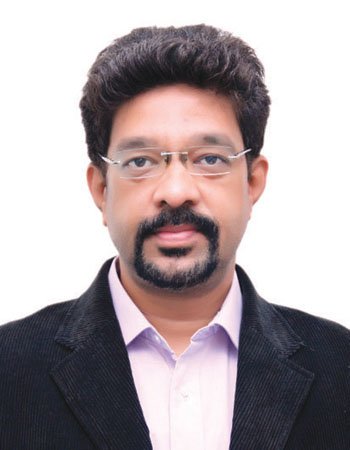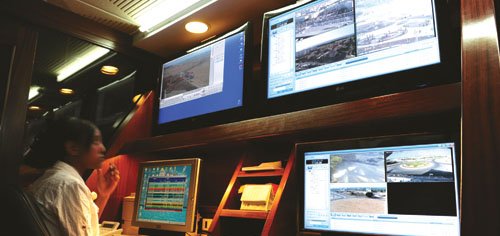 Dhaval Desai, Managing Director, Trafitek Solutions Pvt Ltd talks about the role and prospects of Urban ITS in the country.
Dhaval Desai, Managing Director, Trafitek Solutions Pvt Ltd talks about the role and prospects of Urban ITS in the country.
What are the different aspects of inter-urban ITS?
There are two categories of ITS – Urban ITS and Inter-Urban ITS.
Urban ITS is basically ITS deployed for urban areas like major cities and towns while Inter Urban ITS which is also referred as Highway Traffic Management Systems is deployed for managing Inter connecting roads between cities and towns. The difference in the two systems basically lies in its use. Urban ITS which is called “Smart City” are hyper-active systems supposed to be performing 24×7 for road user guidance, mobility & safety of the traveller. However the Highway ITS is a reactive Incident response system which is normally in sleep mode and wakes up only when there is an incident or abnormal activity. For example, a VMS on a highway displays messages only when there is an accident, incident or severe climatic conditions requiring warning/guidance for motorists to be careful while driving. Incidents can be over speeding or stopping on highways due to break down or medical emergency etc. Even an emergency phone wakes up only when there is an emergency like an accident or medical emergency.
Urban ITS systems such as Traffic Signals, City Surveillance Cameras, VMS, Red Light Monitoring System etc need to work all the time. This is essential for ensuring mobility and safety of people round the clock. Urban ITS includes Traffic Management System, Dynamic Messaging Signs, Red Light Speed Enforcement Systems, CCTV Surveillance and Parking Management Systems. With the advent of the Smart City concept, Road Pricing, Automatic Fare Collection, Energy and Power Management have also become part of Urban ITS.
Hence ITS serves the purpose of not only safety & guidance but also saves time and money giving considerable benefits to the society and country at large.
 What are the unique features of your Highway Traffic Management System?
What are the unique features of your Highway Traffic Management System?
HTMSs are Incident responsive systems and hence it is important they wake up with full functionality whenever an incident requires it to be used. For example, if there is an accident, the person goes to the nearest phone and if the phone is not working at that point of time, the probability of not providing service to the user may lead to severe calamities. Hence it is important the system deployed for highways needs to have all the relevant features to mitigate & manage such incidents plus the products deployed should be of very high quality, meeting International standards. Trafitek products meet very high standards and are assured of 15 years of life on the field under rigorous environment. Our International partners like Ortana from Turkey, Swarco from Austria, Scirocco from Sweden, Traficon from Belgium etc have products working all over the world, from Russia to Saudi Arabia in extreme climatic conditions. Hence they are highly suitable for Indian environment which is very diverse.
The uniqueness of our products lies in quality assurances and their special features. They meet International protocols for transport systems and are housed in alluvium alloy enclosures, used in aircraft, for longer life. We use modern sensors for all our products in Highway Management Systems.
Is HTMS serving its purpose in India, given the heterogeneous nature of the traffic and lack of discipline on the roads?
Definitely it will serve its purpose. In fact, the discipline issues are more seen in urban areas than on highways in India. It is important that the systems deployed for highway management have unique features to manage heterogeneity. Emergency phones, VMS and weather monitoring systems deployed for Highway Management Systems are normally not affected by discipline of traffic as they are only guidance & traveller information systems. It is only the systems like the Automatic counter classifiers and the incident detection systems which get affected to some extent. However using latest technology of managing this abnormality of traffic discipline, one can circumvent and provide 90% plus accuracies. Hence it is important the systems put in place are of the right kind.
You deal in Tunnel Management Systems. What is their scope and their present market outlook in the country?
We deal in Tunnel Management Systems from Ortana. These are similar to Highway Management Systems in many ways and are basically required to manage incidents in the tunnel and inform motorist about such incidents. So in the tunnel, you have tunnel signs such as lane signs, speed signs, emergency phones, VMS etc. Additionally, in tunnels you have ventilation, fire management and electrical systems managed by a centralised Tunnel Management software. Tunnels have large scope as these are vulnerable portions of the highway and if a tunnel gets blocked due to an incident; any delay in managing that incident will create chaos and lead to heavy congestion. We are confident that tunnel management systems will become a priority in all the upcoming highway projects in the country, especially in the hilly terrains.
 What kind of Traffic Engineering services do you offer? What are the companies and sectors you service?
What kind of Traffic Engineering services do you offer? What are the companies and sectors you service?
We provide Traffic Engineering and maintenance services for both Urban and Inter Urban ITS. Services include installation and maintenance of the systems, junction geometric designs in urban scenarios, traffic counts etc. We also undertake last mile connectivity designs for CCTV systems. We basically cater to government organisations like municipal corporations and PWDs, whereas specialised consulting is offered to large organisations and private companies. ITS can contribute a lot towards traffic safety and controlling traffic congestion.
What do you feel needs to be done, from the government side, to implement ITS on a larger scale throughout the country?
It is evident that ITS can definitely contribute a lot towards the economy of the country by providing better guidance and safety to the road users and controlling traffic congestion for improved mobility. However, a lot is required to be done from the government side to ensure quality systems designed with the right features for ITS are deployed in the country. It is hence important that a central agency having country wide presence be put in place which will look at ITS seriously and provide standards for ITS. Such standards should match or even improve upon international standards. This central agency should supervise ITS projects at both micro and macro level with highest level of transparency so that there is equality in opportunity for the ITS systems providers dealing in quality products. Once this is put in place we feel that ITS will be implemented on a very high scale all over the country.
 TrafficInfraTech Magazine Linking People Places & Progress
TrafficInfraTech Magazine Linking People Places & Progress